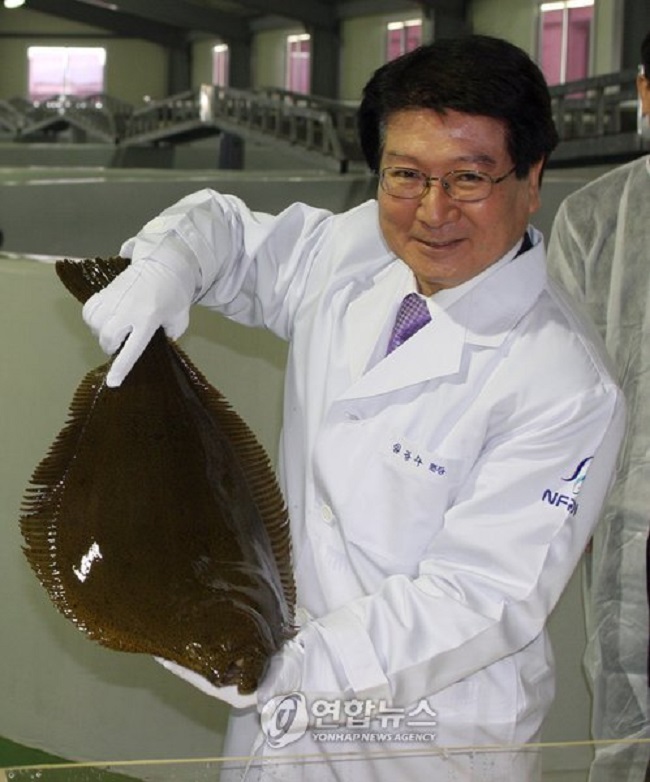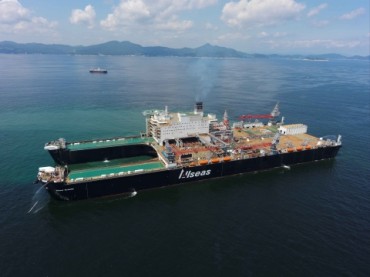
The breeding of the South Korean superfish “king flounder” at aquafarms is set to jump dramatically with the National Institute of Fisheries Science (NIFS) beginning large-scale distribution of fertilized eggs this month. (Image: Yonhap)
BUSAN, Jan. 24 (Korea Bizwire) – Breeding of the South Korean superfish “king flounder” at aquafarms is set to increase dramatically with the National Institute of Fisheries Science (NIFS) beginning large-scale distribution of fertilized eggs this month.
Through a selective breeding program without the use of artificial gene editing, researchers were able to produce the so-called king flounder, named for its robust immunity to disease and for an expedited maturation process that is 30 percent shorter than average flounders.
The NIFS trademarked the name king flounder in South Korea, Japan, China and the European Union after coming up with the term in 2011.
Starting with a January 15 distribution of 3 million fertilized king flounder eggs, the NIFS plans to continue to supply fish farms with the products until June.
After discovering a method of adjusting spawning periods with the use of lighting in 2010, the NIFS has been able to work with private firms to drive up the species’ reproductive capabilities.

The NIFS trademarked the name king flounder in South Korea, Japan, China and the European Union after coming up with the term in 2011. (Image: Yonhap)
The NIFS is capable of producing 5 million fertilized eggs every day.
The flounder occupies a crucial place in domestic aquaculture. Last year, a total of 39,900 tons of flounder worth 500 billion won were farmed, making South Korea the top producer in the world.
Despite recent success, flounder farmers have more than often found themselves in rough waters in the last 30 years, due to a rise in the number of malformed fish spawned, decelerating maturation, the spread of diseases, and other various problems.
The NIFS expects the king flounder to help alleviate these issues, as the fish takes only seven to eight months to grow to a marketable 1kg in size; the normal maturation period is one year for the flounder species.
Lina Jang (linajang@koreabizwire.com)






